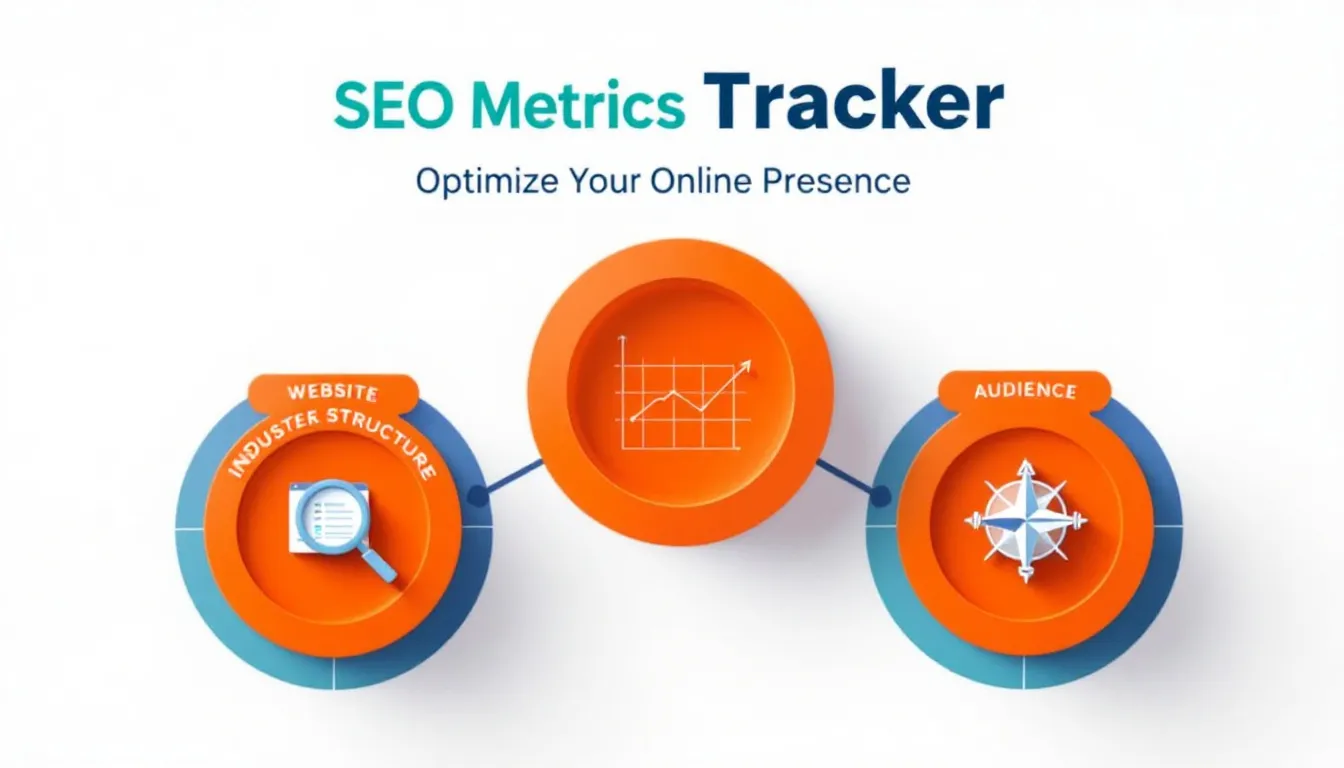Is this tool helpful?
How to Use the SEO Metrics Identification Tool Effectively
To effectively utilize the SEO Metrics Identification Tool, follow these simple steps:
- Enter Website URL: Input your complete website address (e.g., “https://www.travelguide.com” or “https://www.onlinebookstore.net”)
- Specify Business Type: Add your industry category for customized metrics (e.g., “Travel and Tourism” or “Online Retail”)
- Define Target Audience: Describe your intended demographic (e.g., “Business travelers aged 30-50” or “Book enthusiasts interested in rare editions”)
- Click “Identify Key SEO Metrics” to receive tailored recommendations
Understanding SEO Metrics Identification Tool
The SEO Metrics Identification Tool is a sophisticated analytics solution designed to pinpoint the most relevant performance indicators for your website’s search engine optimization strategy. This tool analyzes your website’s characteristics, business type, and target audience to recommend the most impactful metrics for tracking SEO success.
Core Components of SEO Metric Analysis
The tool evaluates three primary dimensions:
- Website Structure and Technical Elements
- Industry-Specific Performance Indicators
- Audience Engagement Metrics
Benefits of Using the SEO Metrics Identification Tool
1. Strategic Focus
Rather than tracking every possible metric, the tool helps you concentrate on the most relevant indicators for your specific situation, saving time and resources while maximizing impact.
2. Customized Recommendations
By considering your industry and target audience, the tool provides tailored metric suggestions that align with your business objectives and market position.
3. Performance Optimization
Understanding which metrics matter most allows for more effective resource allocation and strategy adjustment, leading to improved SEO outcomes.
Solving Common SEO Tracking Challenges
Challenge 1: Metric Overload
Many businesses struggle with tracking too many metrics, leading to analysis paralysis. The tool addresses this by identifying the most crucial indicators for your specific situation.
Challenge 2: Industry Relevance
Different industries require different measurement approaches. For example:
- E-commerce: Focus on conversion tracking and product page performance
- Content Publishers: Emphasis on engagement metrics and time-on-page
- Local Businesses: Priority on local search visibility and geographic performance
Practical Applications and Use Cases
E-commerce Example
An online fashion retailer might receive these recommended metrics:
- Product Page Organic Traffic Growth
- Category Page Rankings for Commercial Keywords
- Mobile Commerce Conversion Rate from Organic Search
B2B Service Provider Example
A software company might focus on:
- Lead Generation from Organic Search
- Technical Documentation Page Performance
- Industry-Specific Keyword Rankings
Content Publisher Example
A news website might track:
- Fresh Content Indexing Rate
- News SERP Feature Appearances
- Topic Cluster Performance
Advanced Implementation Strategies
Temporal Analysis
Consider tracking identified metrics across different timeframes:
- Daily monitoring for critical performance indicators
- Weekly trend analysis for medium-term patterns
- Monthly strategic review for long-term progress
Competitive Benchmarking
Use the identified metrics to:
- Compare performance against industry standards
- Track relative market position
- Identify competitive advantages and gaps
Frequently Asked Questions
How often should I analyze these metrics?
Regular monitoring is recommended, with weekly reviews for tactical metrics and monthly analysis for strategic indicators. Adjust the frequency based on your business cycle and market dynamics.
Can I add custom metrics to the recommended set?
Yes, the tool’s recommendations serve as a foundation. Add specific metrics relevant to your unique business goals and market position.
How do seasonal trends affect metric selection?
Consider adjusting your metric focus during peak seasons or promotional periods to capture seasonal performance variations accurately.
Should startups use different metrics than established businesses?
Yes, startups might focus more on growth metrics and market penetration indicators, while established businesses might emphasize retention and market share metrics.
Can these metrics be integrated with other marketing KPIs?
Absolutely. The recommended SEO metrics should be part of your broader marketing measurement framework for comprehensive performance analysis.
How do I interpret metric correlations?
Look for relationships between different metrics to understand cause-and-effect patterns in your SEO performance. This helps in strategic decision-making.
Best Practices for Metric Implementation
Documentation and Reporting
Maintain detailed records of:
- Baseline measurements
- Progress tracking
- Strategic adjustments
- Success milestones
Team Alignment
Ensure all stakeholders understand:
- The significance of each metric
- Their role in improving performance
- Regular reporting procedures
- Action items based on metric insights
Continuous Improvement Process
Regular review and adjustment of your metric tracking strategy ensures ongoing relevance and effectiveness:
- Quarterly metric performance review
- Annual strategic alignment check
- Periodic tool configuration updates
- Continuous learning and optimization
Important Disclaimer
The calculations, results, and content provided by our tools are not guaranteed to be accurate, complete, or reliable. Users are responsible for verifying and interpreting the results. Our content and tools may contain errors, biases, or inconsistencies. We reserve the right to save inputs and outputs from our tools for the purposes of error debugging, bias identification, and performance improvement. External companies providing AI models used in our tools may also save and process data in accordance with their own policies. By using our tools, you consent to this data collection and processing. We reserve the right to limit the usage of our tools based on current usability factors. By using our tools, you acknowledge that you have read, understood, and agreed to this disclaimer. You accept the inherent risks and limitations associated with the use of our tools and services.







